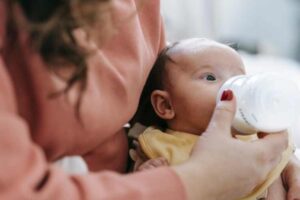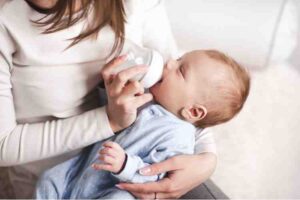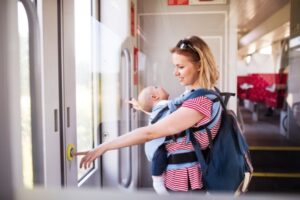Bringing your baby along for your travels can lead to many firsts. But it’s not all sunshine—new challenges are also on the menu! In this article, we’ll offer some life-changing baby travel tips for your new wave of family adventures.
Baby Travel Essentials
It’s never too late to make a travel checklist, especially with your baby in mind. You can never be sure how forgetting a small toy or a pacifier can change the course of your trip for the worse.
Most of your packing checklist should be compiled weeks before you leave. In addition to essentials and personal effects, don’t forget to assess the weather in your travel destination. You can do this closer to departure.
Finally, here are some crucial items to consider:
- Feeding: baby food, bottles, formula, a bottle warmer, a breast pump with accessories, and a cooler bag.
- Travel equipment: car seat, travel stroller, baby carrier or a sling, portable white noise machine, and an all-around blanket.
- Hygiene: first aid kit, wipes, clippers, pacifier, diapers, medicines, clothing and spare clothing, diaper bag, changing pad, baby bath essentials, and baby monitor.
- Others: travel documents, medical records, and travel-friendly toys.
The list can be as long as you want or as needed, and mind you; your little human will need a lot of things. Hence, we encourage you to prepare in advance to have enough time to account for all your baby travel essentials and more.
Flying for the First Time? Bassinet or a Car Seat?
Experts agree that car seats are safer for kids, especially if they’re still under forty pounds. But companies don’t enforce this, so you can fly the baby for free if they are under two.
It’s a common practice, but here’s how to make it even better: book a bassinet seat. Bassinet seats are available on a limited, first-come, first-served basis at the time of reservation.
Many airlines offer bassinets for long-haul flights. These seats are assigned in the bulkhead row; thus, you can get extra legroom and a safe, cozy spot for your baby to sleep. Talk about lifehacks.
But if bassinet seats are unavailable, consider booking a separate seat instead. Sooner or later, you’ll probably get a car seat for your little one. So why not start here?
The most significant benefit of flying with a lap baby is that it’s cost-effective. The caveat is that you’ll have to hold your child the rest of the way through turbulence and whatnot. Understandably, this raises safety and comfort concerns for you and the baby.
With car seats, a lot of that goes away since they’re already strapped in. But this remains a personal choice, so you can simply choose what’s most comfortable or available.
Don’t Forget to Pack Extra Clothes and Diapers
Kids can have their messy streak all of a sudden. So, pack at least one extra outfit for your baby—and don’t forget an extra shirt for yourself since a diaper blowout or a mid-flight spill is no joke.
Likewise, having more diapers is better than finding yourself short. To save space and for accessibility, stash a few in your carry-on and keep the rest in your checked luggage, hybrid carrier, or diaper bag.
Learn TSA Rules for Breast Milk and Formula
Knowing the TSA rules is essential for traveling with breast milk or formula.
At the airport, you can let TSA officers know you’ve got formula so they can screen it. This process is safe, so you don’t have to worry about contamination. They might ask you to open the container or cooler, and that’s about it.
Also, the restrictions that TSA administers to most liquids will not apply to your formula or breast milk since they are considered medically necessary, which means you can bring more than 3.4 ounces.
Plan Your Travels Around Your Baby’s Schedule
Try to plan your trip around your baby’s schedule. If they fall asleep at a particular time, you can plan a portion of your journey around that cycle. You can do the same for their eating or bottle-feeding habits.
In most cases, earlier flights are favorable with fewer crowds and delays. If you have a long journey, consider a long layover to give everybody time to reset. You can also extend intervals if you have connecting flights to avoid rushing to your next stop.
Take a White Noise Machine to Your Trip
One advantage of using a white noise machine at home is that babies become accustomed to the environment it creates. Therefore, a portable sound device can help them sleep even in a noisy airport or an unfamiliar hotel room. Some children may also dislike white noise machines, so pushing for it is unnecessary.
Feed Your Baby During Take Off and Landing
Your baby may feel a bit of discomfort in their ear during the plane’s landing or take-off as the cabin pressure changes, and sucking and swallowing can alleviate this discomfort. If breastfeeding or bottle-feeding isn’t possible, you can lend them a pacifier to keep them busy.
Change Diapers Before Boarding
Changing a diaper in a cramped airplane bathroom is far from ideal.
To avoid this (most of the time), change your baby’s diaper right before boarding to minimize the chances of needing to do it mid-flight. If you need to change them on the plane, most aircraft have fold-down changing tables in the restrooms—just ask the flight attendant for assistance. Otherwise, you may need a closed toilet seat as a changing pad.
Bring Their Favourite Toys
Having a happy baby onboard or on the road can avoid many of your mid-travel concerns. And what makes children happy? If not food, then it’s most definitely their toys. Sensory toys, puzzles, and doodle boards are some travel-friendly toys on top of our list. But books can be good, too. The goal is to keep them busy!
Conclusion
With a little preparation and the right mindset, you can make the journey memorable for both you and your little one. This checklist should help you stay on top of your baby essentials; however, don’t forget to pack accordingly for your sake, too!








